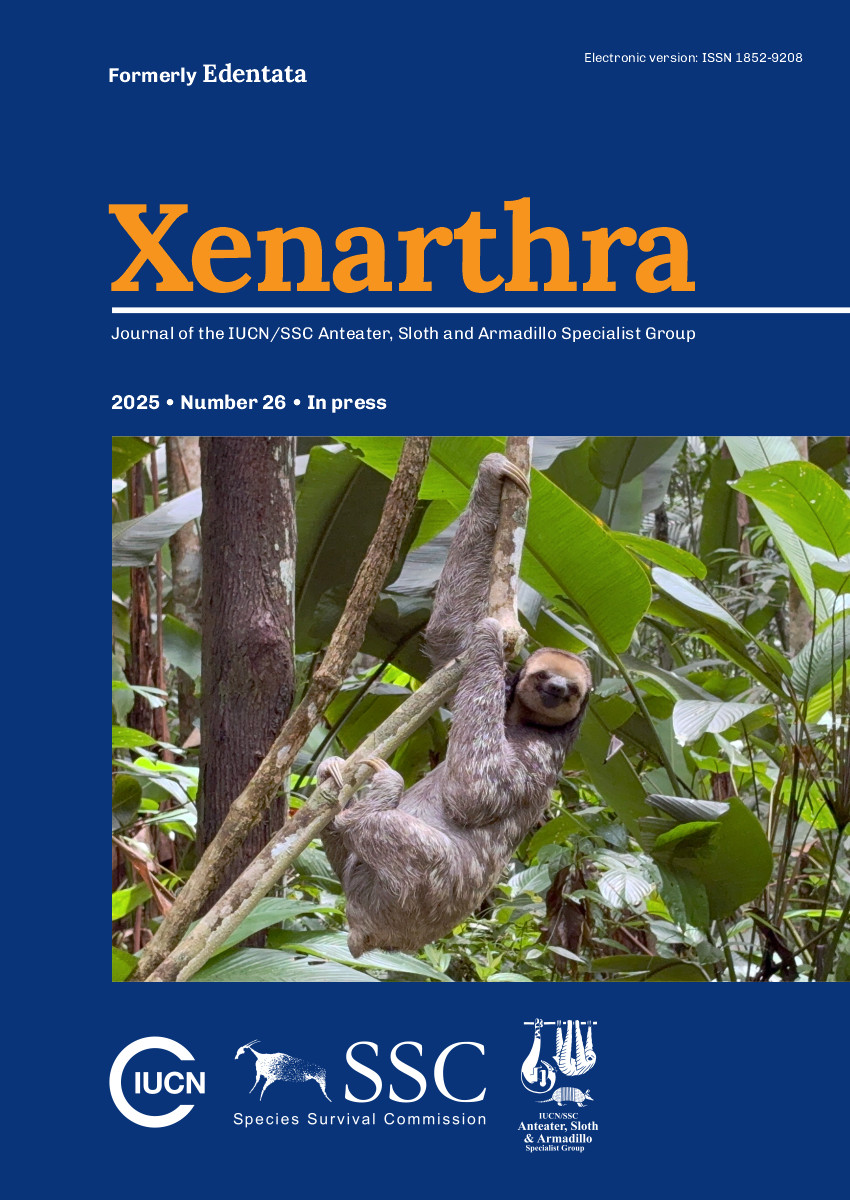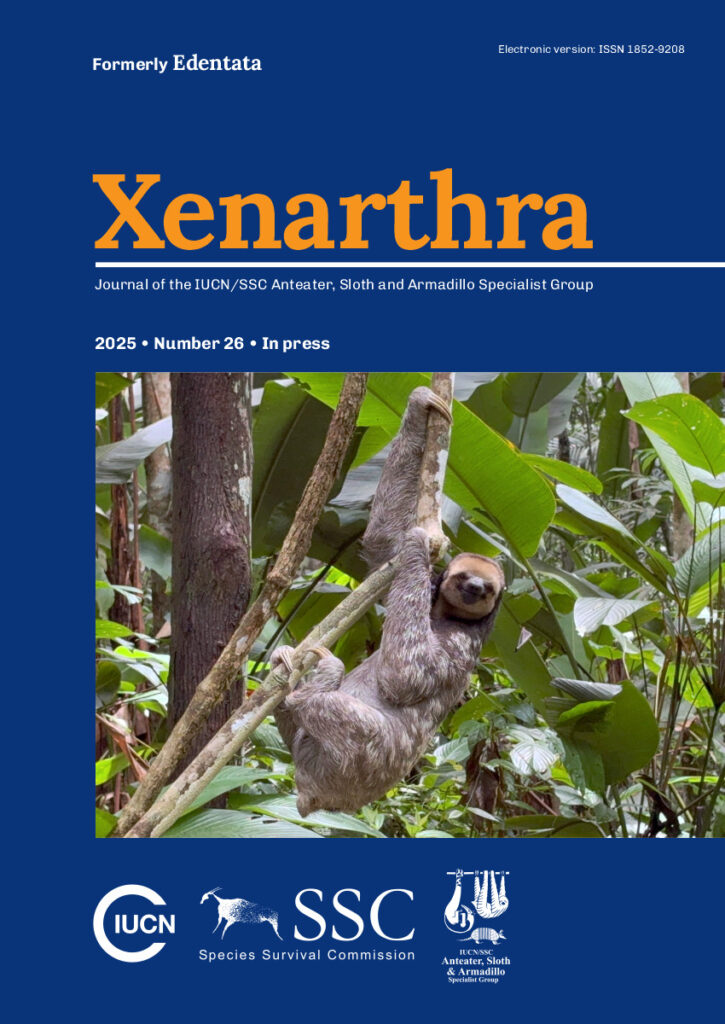2025 (in press)
Note that this issue is not yet complete, however the articles below are considered published, since they are published continuously, as soon as they are ready.
Download of all articles as a zipped file will be available once the issue is complete.
Contents
| Abstract | Type or Section | OpenGraph image | Title | Authors | DOI | e-Locator | |
|---|---|---|---|---|---|---|---|
We report on some novel natural history observations of southern three-banded armadillo Tolypeutes matacus and six-banded armadillo Euphractus sexcinctus from Paraguay. These are: 1) a new band anomaly for an adult of T. matacus; 2) inclusion of the newly described subterranean termite Heterotermes lauralinearum Carrijo, 2020 (Rhinotermitidae) and the ant Atta vollenweideri (Forel, 1893) (Formicidae) in the Paraguayan diet of T. matacus; 3) the first reports of parasitism of T. matacus by fleas (Pulex irritans and potential lesion of Tunga perforans) in Paraguay; 4) identification of tracks of T. matacus in the field; and 5) the first documented record for E. sexcinctus in Ñeembucú department. Informamos sobre algunas observaciones novedosas de historia natural del tatú bolita Tolypeutes matacus y el tatú poju Euphractus sexcinctus de Paraguay. Estas son: 1) una nueva anomalía de banda para un adulto de T. matacus; 2) inclusión de la termita subterránea recientemente descrita Heterotermes lauralinearum Carrijo, 2020 (Rhinotermitidae) y la hormiga Atta vollenweideri (Forel, 1893) (Formicidae) en la dieta paraguaya de T. matacus; 3) los primeros reportes de parasitismo de T. matacus por pulgas (Pulex irritans y lesiones atribuibles a Tunga perforans) en Paraguay; 4) identificación de huellas de T. matacus en campo; y 5) el primer registro documentado de E. sexcinctus en el departamento de Ñeembucú. | Field Note |  | Some natural history notes on Paraguayan armadillos (Xenarthra, Chlamyphoridae) Tolypeutes matacus and Euphractus sexcinctus | Paul Smith, Rebecca L. Smith, Matthew T. Owen | 10.2305/IKXB8474 | e2601 |


